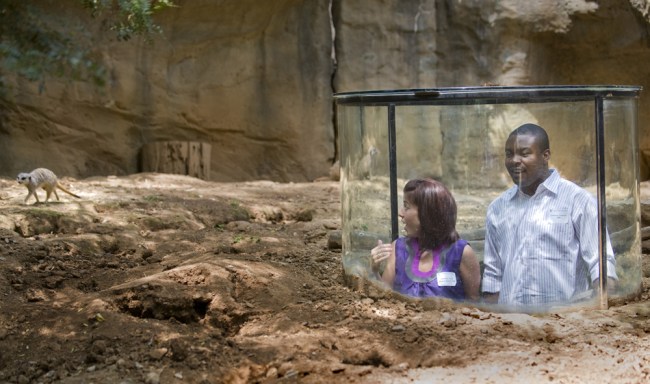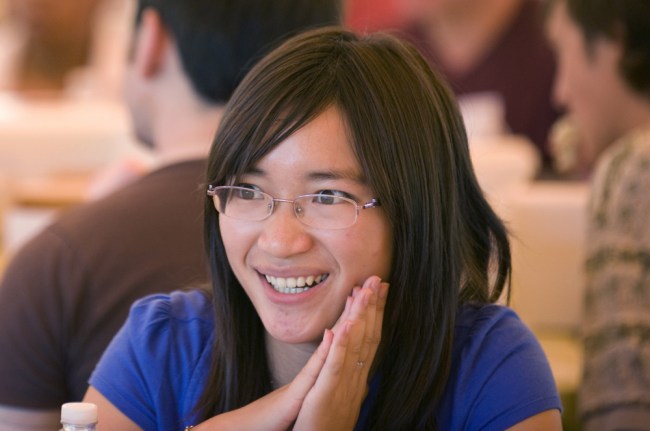
Jeanne Jodin and Valentine Chukwuma observe the meerkat display at the Nashville Zoo during orientation for incoming biomedical graduate students Monday. (photo by Joe Howell)
Back to School '09: Biomedical graduate students ready to roll
Before beginning their studies, Vanderbilt's incoming class of biomedical graduate students took at walk on the wild side.
The 99 students had orientation activities at the Nashville Zoo and spent time with elephants, giraffes, meerkats and more while getting to know each other.
The Interdisciplinary Graduate Program (IGP) enrolled 77 students, the Chemical and Physical Biology (CPB) program enrolled 15, and the Initiative for Maximizing Student Diversity (IMSD) enrolled seven.
The students represent nine countries and 30 states, and 19 percent come from groups underrepresented in science.

Yaoyi Chen talks with fellow incoming biomedical graduate students during orientation. (photo by Joe Howell)
Three students have already been awarded pre-doctoral fellowships from the National Science Foundation.
“The fact that we have three students with these fellowships reflects the quality of the applicant pool,” said James Patton, Ph.D., director of the IGP. “Our ability to convince the best graduate students to come here is a direct reflection of the hard work and success of our faculty, which underlies Vanderbilt's increased national stature and rankings.”
The IGP and IMSD are for students interested in biological and biomedical research, while the CPB program is aimed at students who wish to pursue research in areas that span the boundaries of the chemical, physical and biological sciences.
In the first year, students complete coursework and laboratory rotations, after which they choose the departments and programs where they will complete their training and engage in dissertation research.
This year brings significant changes in the curriculum for first-year students. The class will be broken into focus groups consisting of nine-to-10 students, a faculty adviser, a senior graduate student and a post-doctoral fellow. The groups will meet weekly to read and critically evaluate literature and learn how to do good science.
“The goal is to teach them to dissect the primary literature, make them better at critical analysis, and ultimately, better prepared to enter the labs,” Patton said. Regardless of background, “this is a way to get all students on the same level.”
The focus groups will also benefit a select group of senior graduate students and post-doctoral fellows because they will take over the sessions in the second semester and gain valuable teaching experience.
“We are training all of our students to be good scientists,” Patton said, “but that career can follow many pathways these days. They can do research, teach or enter the biotech/pharmaceutical world.
“Those are the traditional routes, but increasingly students are working in public policy, scientific writing, government and even as high school teachers, which is important because we need people to educate the public about science, especially as it plays an increasingly important role in all areas of society.”













